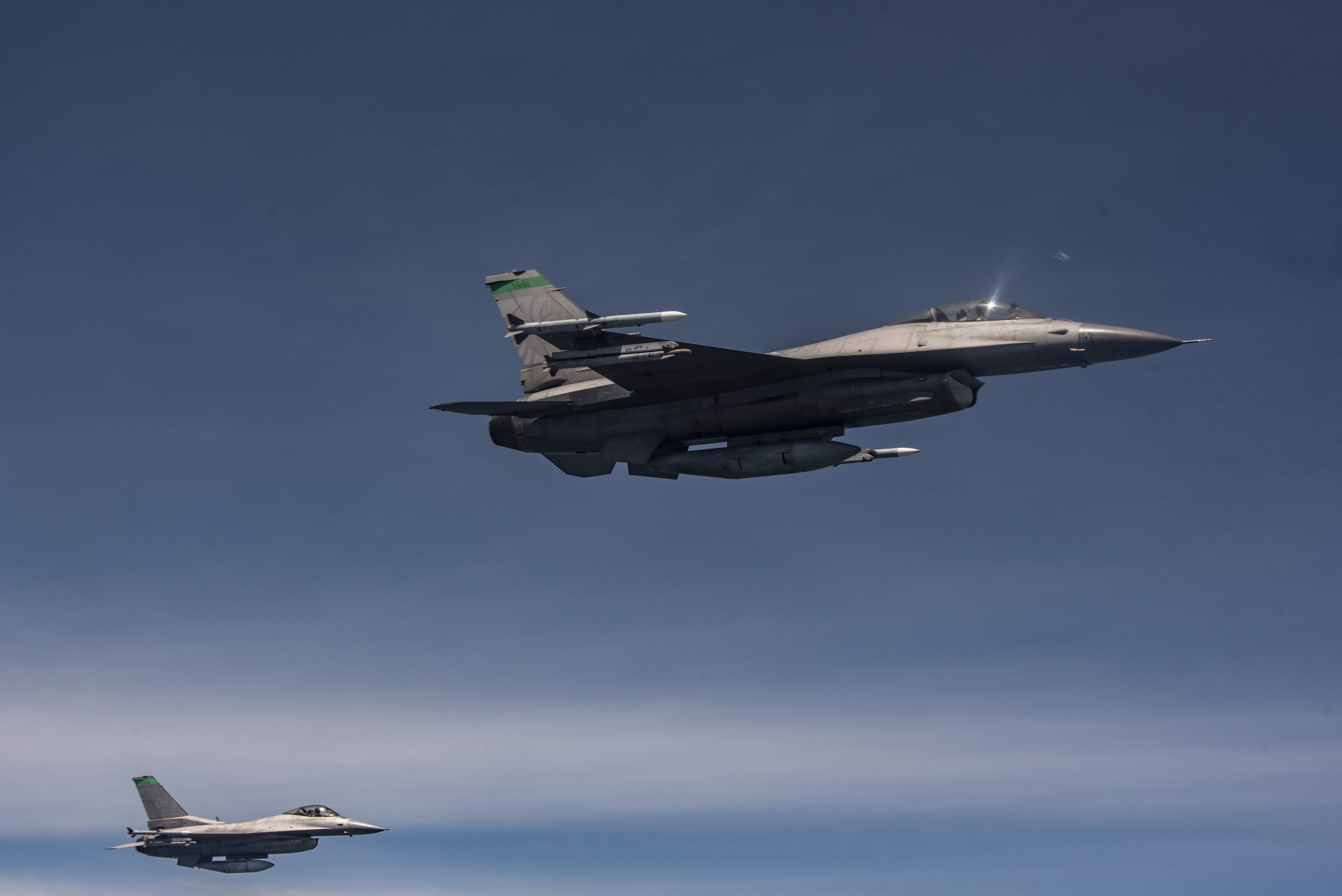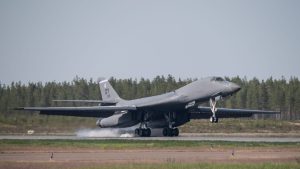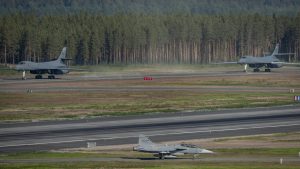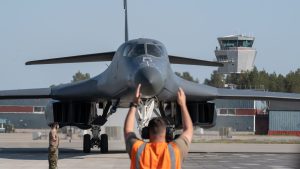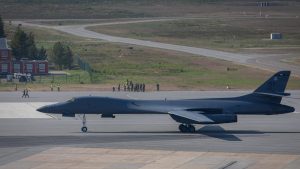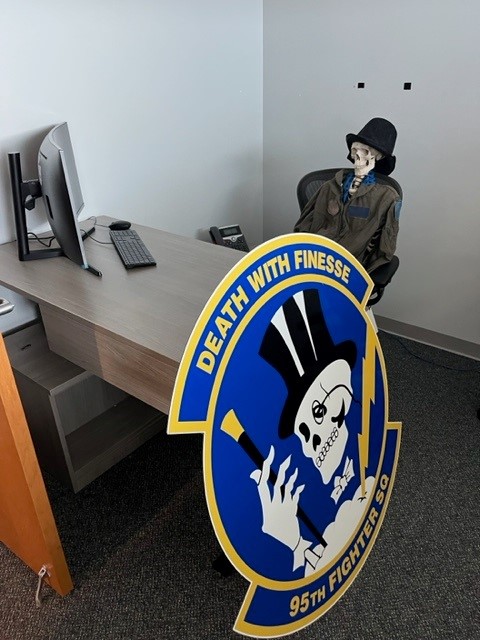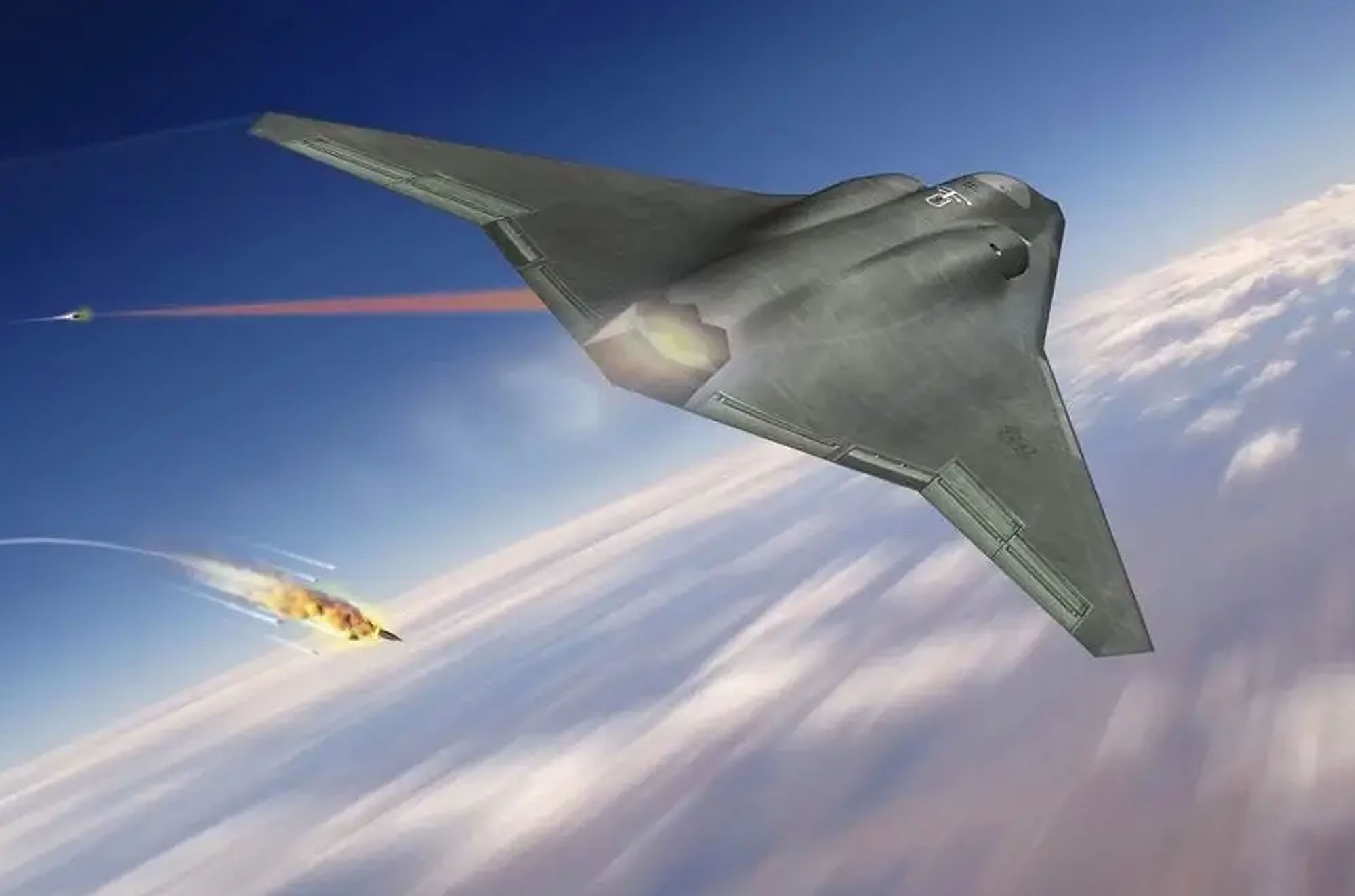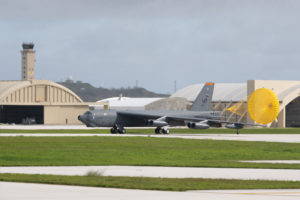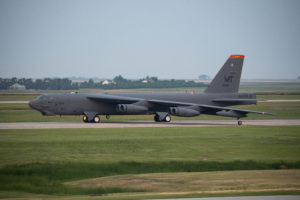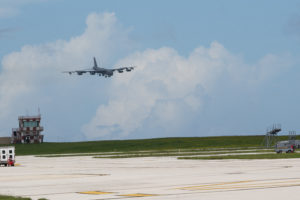F-35 maker Lockheed Martin thinks the Pentagon should reverse course and pursue the more expensive but technologically advanced Adaptive Engine Transition Program (AETP) for future versions of the fighter, rather than the more incremental F135 Engine Core Upgrade chosen by the Air Force in its 2024 budget.
Responding to a query from Air & Space Forces Magazine, a Lockheed Martin official said the contractor is ready to “support and continue to work with the U.S. government on the capability and performance upgrades, including an engine upgrade, that best support their requirements for the F-35 for decades to come.”
However, the AETP engines—one each developed by GE Aerospace and Pratt & Whitney—will deliver more power and cooling capability than Pratt’s Engine Core Upgrade, “which is required as we modernize the F-35 beyond Block 4,” the spokesperson said.
It is the first time the F-35 prime contractor has weighed in on the ongoing debate over how to supply the increased power and cooling needed for the Block 4 version of the stealth fighter. The government awards contracts for the F135 engine separately from the F-35 airframe, and the engine is provided to Lockheed as government-furnished equipment.
In an assessment of the F135 released in May, the Government Accountability stated that “the cooling system is overtasked, requiring the engine to operate beyond its design parameters. The extra heat is increasing the wear on the engine, reducing its life, and adding $38 billion in maintenance costs.”
The GAO also urged the F-35 Joint Program Office to build a better business case for upgrading the F-35’s engine, although it agreed that the ECU is the less-costly and less-risky approach.
The Lockheed official noted the F-35 fleet is expected to serve until 2070, “which will require further upgrades.” To stay ahead of projected threats, “the F-35 will need even greater capability, readiness, range and thrust, which will require an upgraded engine.”
Greg Ulmer, Lockheed’s executive vice president for aeronautics, told Breaking Defense in an interview at the Paris Air Show that he thinks it is “shortsighted” of the government to drop the AETP option when it will not only provide greater power and cooling for the Block 4 version of the fighter, but for future versions as well.
“I think there’s elements within the Pentagon talking along the lines that there will be a Block 5 and a Block 6, and there’ll be other considerations in the future,” Ulmer said.
Pentagon officials have said the choice of the ECU was driven by its lower development cost and the fact that a new engine would force the creation of a new logistics train. But Ulmer suggested cost should be less important than addressing threats and major power and cooling upgrades will likely be needed in the future anyway.
Neither Ulmer nor the Lockheed spokesperson endorsed a particular AETP engine for the F-35.
Under the AETP, an Air Force-run technology development effort, GE Aerospace developed the XA100 and Pratt developed the XA101, both using third-stream bypass airflow to develop engines that would be more efficient both in thrust-on-demand as well as cruise.
However, Pratt successfully advocated for an Engine Core Upgrade to its F135 engine, which would improve the performance of the F-35 some, but not to the degree that an AETP engine would. The two AETP powerplants deliver about 30 percent better range versus the F-35’s current F135 engine, along with roughly 20 percent more acceleration and double the cooling power.
On the other hand, an AETP engine would likely not fit on the F-35B Short Takeoff/Vertical Landing version of the fighter, meaning the Air Force would have had to pay the cost of a new engine by itself.
In budget briefings earlier this year, Air Force Secretary Frank Kendall said he was disappointed in the choice of the ECU but agreed that it was the best one for the Defense Department overall, noting “you can’t do everything you want to do.”
The choice of the ECU over an AETP option effectively gave Pratt a continuing monopoly on F-35 engine work.
However, the Air Force kept the AETP development program going, as the service said it will provide the base capability for the Next Generation Air Dominance (NGAD) fighter. The new engine development effort is called the Next Generation Advanced Propulsion (NGAP) program.
House Armed Services Committee chair Rep. Mike Rogers (R-Ala.) added $588 million to AETP as part of his markup to the 2024 National Defense Authorization Act, in order to preserve F-35 engine options.
In a statement to Air & Space Forces Magazine, Pratt & Whitney said the AETP is now “a technology program that will feed into sixth-gen fighter platforms.” It criticized Lockheed’s comments, saying the F-35 prime “wants to put an unproven adaptive engine on a single engine fighter jet, regardless of the hefty price tag and the significant delay in delivering critical capabilities to the warfighter at a time of urgent need.”
Lockheed’s push for the AETP “undermines the DOD’s decision to move forward with the F135 Engine Core Upgrade, a decision that was studied, validated, submitted, and fully funded in the administration’s budget,” a Pratt spokesperson said.
“Block 5 does not exist as a defined set of capabilities at this time,” the spokesperson added. “But regardless of which Block we’re discussing, the F135 ECU paired with an upgraded PTMS [Power and Thermal Management System] can provide 80 kilowatts or more of cooling power for the F-35, which will exceed all power and cooling needs for the F-35 through the life of the program.”
In its own statement to Air & Space Forces Magazine, GE said adaptive engines “represent the future of combat engines that will power the airborne force in the decades ahead.” GE has worked with Lockheed “to ensure our engine is optimized for their platform needs today and in the future. Continuing AETP ensures that this technology can be matured to completion, establishing a leverageable model for future needs and programs.”
The Mitchell Institute for Aerospace Studies, in a forthcoming report, say the AETP offers “a far more aggressive solution” to the F-35’s increasing power and cooling needs.
“Congress is relooking the issue,” retired Lt. Gen. David Deptula, dean of the Mitchell Institute, told Air & Space Forces Magazine. “It is an incredibly difficult choice, with Secretary of the Air Force Frank Kendall remarking, ‘If we had the opportunity to reconsider that, I think that would be something I’d like to have another shot at.’”

